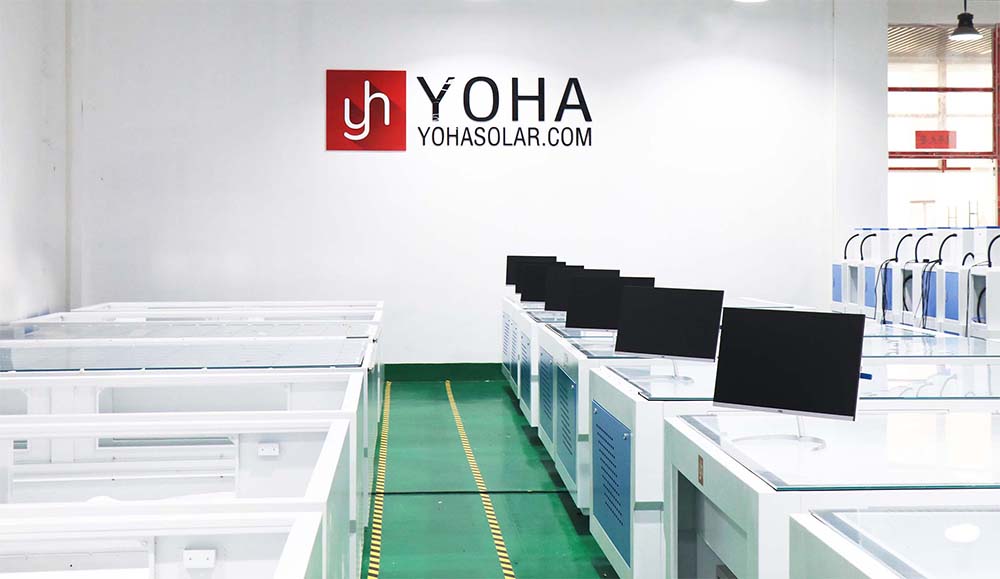Welcome to Wuhan Yoha Solar Technology Co., Ltd!
common problem
Site Map
Language:
 Chinese
Chinese
 English
English
Welcome to Wuhan Yoha Solar Technology Co., Ltd!
common problem
Site Map
Language:
 Chinese
Chinese
 English
English
Whenever the sky clouds over or a light rain falls, many PV users inevitably wonder: "Are my solar panels still working right now?" The truth is, photovoltaic panels do continue generating electricity during cloudy or low-light conditions, albeit with significantly reduced efficiency compared to sunny days. Understanding this is crucial for scientifically planning PV systems and accurately evaluating power generation returns.
Cloudy ≠ Power Outage: Continuous Energy Conversion in Low Light
The core of solar cells lies in the photovoltaic effect. As long as visible light reaches the cell surface—regardless of intensity—photons can excite electrons in the silicon material, creating an electric current. Therefore:
Light persists even on rainy days: Diffused light penetrates cloud layers. Raindrops can even briefly reflect and refract light, providing additional illumination.
Low irradiance ≠ zero generation: Panel output power is roughly proportional to light intensity (irradiance). Standard testing conditions are set at 1000 W/m² (clear noon). During overcast/rainy weather, irradiance may plummet to 100-300 W/m² or lower. While system output drops substantially (possibly to just 10%-30% of rated power), it does not cease entirely.
Broad spectral response range: Modern PV cells (especially high-efficiency types like monocrystalline silicon, PERC, HJT, and TOPCon) exhibit wide and sensitive responses across the visible light spectrum (particularly red and infrared). Rainy-day light contains relatively higher proportions of these longer wavelengths, enabling effective capture and utilization.
Technical Key Point: Low-Light Performance
PV modules using different technologies exhibit varying performance under low-light conditions. The key metric is conversion efficiency at low irradiance. High-quality modules optimize cell structure, minimize internal losses, and enhance surface light transmittance/trapping capability. This ensures relatively high generation efficiency even at 200 W/m² or lower irradiance, maximizing rainy-day yield.

Critical Factors Affecting Rainy-Day Generation:
Light Intensity is Paramount: Cloud thickness, rainfall intensity, and time of day (dawn/dusk) directly determine available light—the fundamental factor affecting output.
Module Technology is Crucial:
Cell Type: Monocrystalline silicon typically outperforms polycrystalline in low light. PERC, HJT, and TOPCon technologies excel under weak light due to superior passivation and carrier collection.
Surface Properties: Anti-reflective coatings minimize light loss and maximize transmission. Surface cleanliness critically impacts capture of faint light.
System Design & Component Quality:
Temperature Coefficient: Rainy days often bring cooler temperatures. PV modules have a negative temperature coefficient (power decreases as temperature rises), meaning lower temperatures slightly increase voltage output, partially offsetting irradiance loss.
Component Quality & Matching: Poor-quality modules or severe mismatch within a system create "weak links" that may drop below the operating voltage threshold faster in low light.
Inverter Efficiency: Inverters convert low-voltage DC to high-voltage AC. Weak light results in lower DC voltage, demanding higher efficiency from inverters at low loads and lower startup voltages. Premium inverters start efficiently at very low DC input voltages.
The Value of Rainy Days: Accumulating Little by Little
While daily output on rainy days falls far short of sunny days, their cumulative contribution is significant:
Extends Daily Generation Window: Systems work continuously during dawn, dusk, and overcast periods, significantly increasing productive hours.
Smooths Seasonal Output: In less sunny seasons or rainy regions, rainy-day generation forms a vital part of annual yield, preventing "cliff-like" drops in winter/monsoons.
Enhances System Economics: Ignoring this generation overestimates payback periods. Accurate ROI calculations must include expected low-light yield.
Practical Tips for Optimizing Low-Light Performance:
Prioritize High-Efficiency Modules: Select modules known for strong low-irradiance performance (e.g., check 200 W/m² output specs). Choose reputable brands using PERC, HJT, or TOPCon technology.
Ensure Professional Installation:
Tilt & Orientation: Optimize angle based on latitude and local climate (e.g., rainy season patterns), balancing annual total irradiation capture—especially diffuse light. Avoid shading at all costs.
System Matching: Ensure module characteristics (voltage, current) align well with inverter specs to prevent frequent inverter shutdowns due to low voltage in weak light.
Prioritize Regular Maintenance:
Clean Panels: Dust, bird droppings, and debris disproportionately reduce low-light yield. Keeping surfaces clean is the most direct way to boost performance.
Monitor System: Use monitoring platforms to track rainy-day performance and quickly identify issues (e.g., inactive strings).
Choose Compatible Inverters: Select inverters with low MPPT startup voltage and high conversion efficiency at low loads to ensure optimal operation under minimal irradiance.
Conclusion: Harnessing Every Ray
Cloudy or low-light conditions are not no-go zones for solar power. Modern PV technology effectively captures and converts even this seemingly faint energy. While output can't match bright sunny days, this persistent "trickle" demonstrates the stable, reliable, and all-weather nature of PV systems.
Understanding PV operation principles and limitations in weak light—combined with selecting efficient components, optimizing system design, and diligent maintenance—maximizes utilization of every available photon. Even on overcast, drizzly days, your PV system works silently, steadily contributing to your energy savings. The true value of photovoltaics lies in their ability to reliably and continuously transform every usable ray of sunlight into electricity, whether it arrives blazing or gentle.
When sunlight retreats, energy generation doesn’t end. Solar technology has mastered capturing energy flowing within the faintest light. Behind every cloud, modern science continuously unlocks the value of light.
keywords:TOP
18086473422
MESSAGE
